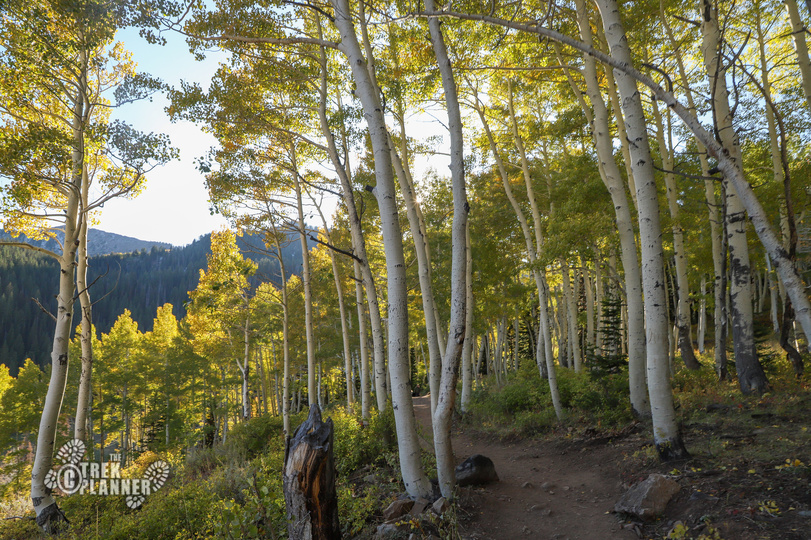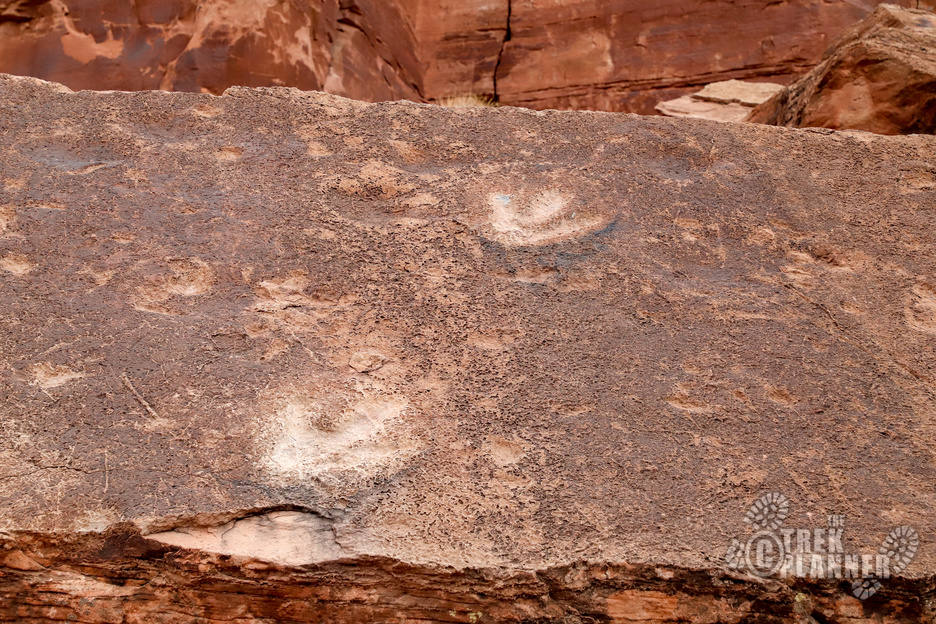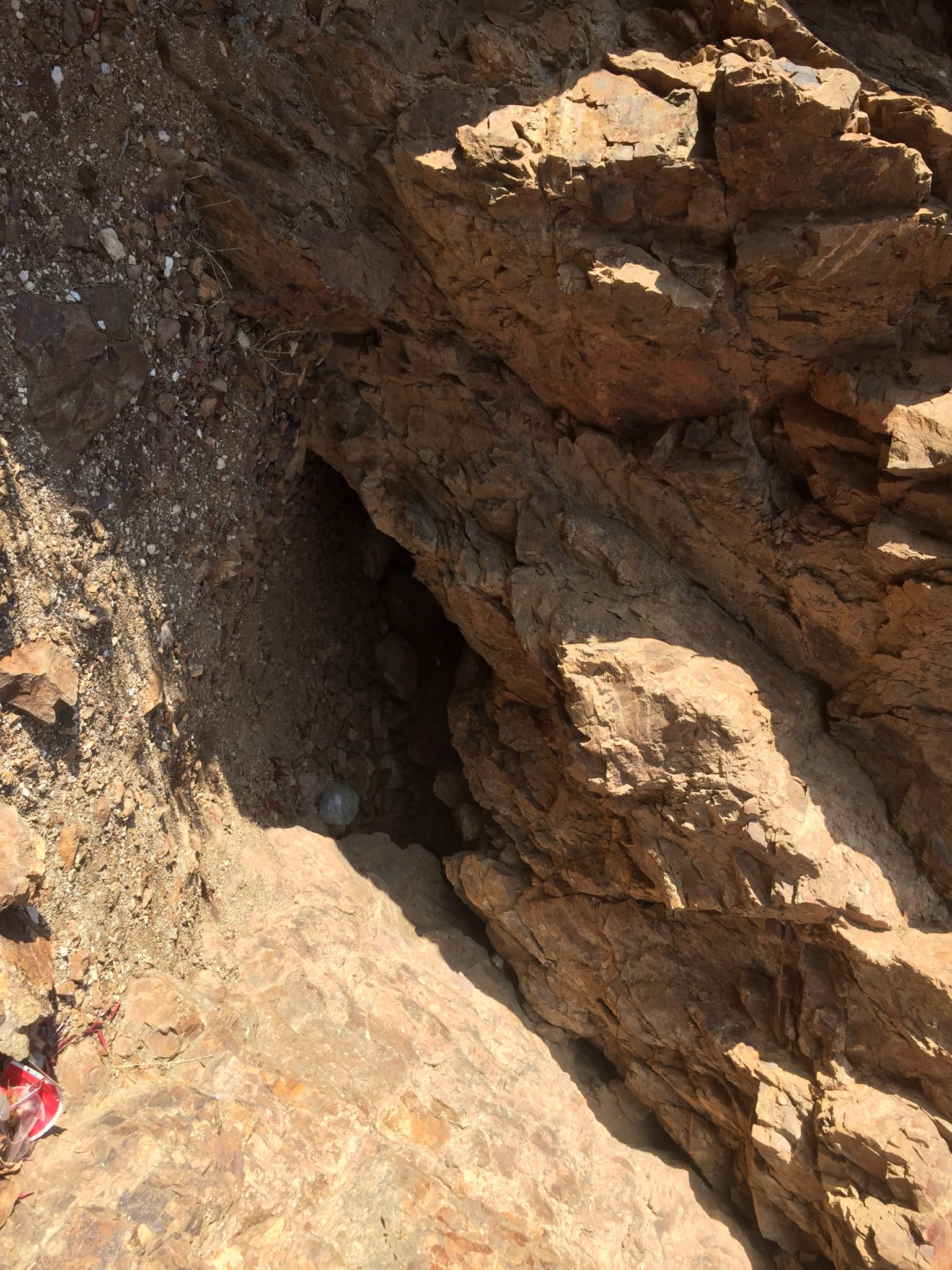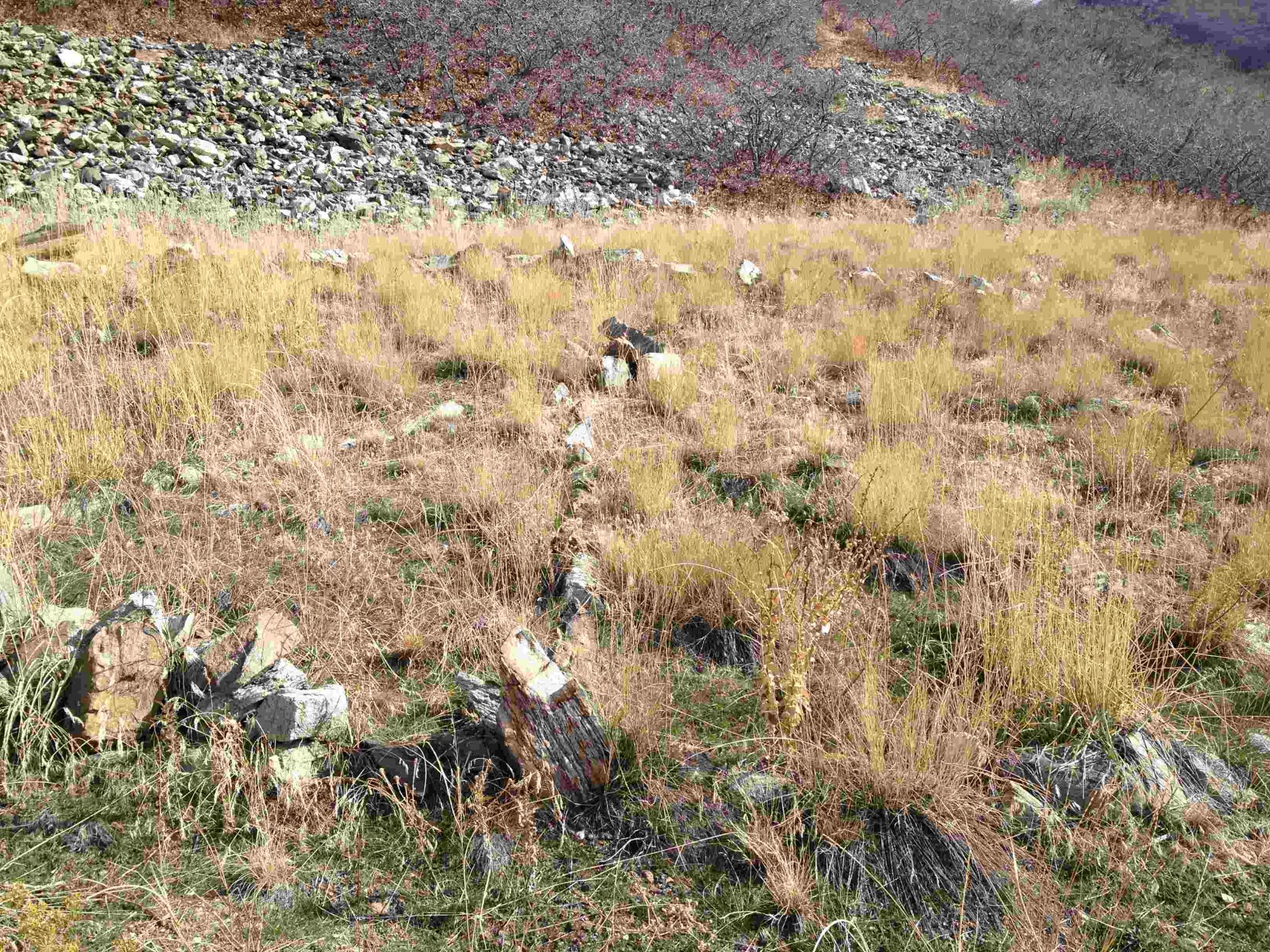
GPS coordinates to the mine are for Insider Members only
(memberships are currently unavailable)This content is locked

Experience. Discover. Explore.
Follow along on our adventure then go out on your own!




Please see below for historical affidavits, a timeline of Burro Mine history and other information and opinion regarding the Burro Mining complex located in Bountiful Utah. To see a summary of all the buildings and mine workings please see the Analysis near the bottom.
The Burro Mine is a large area of mining claims, adits, tunnels, shafts, raises, prospects and pits that are all located near Black Mountain in Salt Lake and Davis County (up several miles in Mueller Park, Bountiful). It is located on the other side of City Creek in Salt Lake City.
The Burro Mine featured the Little Burro Mine, Big Burro Mine, Burro Mine, Burro Colt, Burro Mare, Burro Jack, Burro Extension 1, Burro Extension 2, Burro Extension 3, Burro Extension 4, Burro Extension 5, Burro Extension 6, Burro Extension 7 and Burro Extension 8.
From my research I have seen what appears to be an incredible operation up on the Bountiful side of Black Mountain. If you look in the Analysis part of this Trek you will see the lists of buildings, trams, roads, bridges, tunnels and more, detailing what exactly what was going on.
I have found many newspaper articles from the old mining newspaper called the Salt Lake Mining Review. This newspaper featured the operations of Utah and even surrounding states at the time and has many pictures and articles written about the Burro Mine and the people involved. The person first responsible for the Burro Mine was Pierre Peugeot. Then he got the help of his brother Leon Peugeot who was later made the Superintendent of the Burro Mining Company. Leon is of great interest because he is the one who has his name written all over the affidavits that you will see below.
In order to get a better understanding of the Burro Mine, I suggest you read the following newspaper article located directly below, from the Salt Lake Mining Review titled Discovery and Development of the Burro Mine written by Will C. Higgins and published on September 15, 1910. Or you can view it here (SLMR – Sept 15, 1910 – Burro Mine Info)



Here is the transcript below.
————————————————
Discovery and Development of the Burro Mine
by Will C. Higgins
From the top story of the Boston block in Salt Lake City, or from any of the sky-scrapers lining Main Street, the observer can look to the north, with an unobstructed view, until his eyes rest upon Black mountain, some fifteen miles distant, the mountain’s crest forming the divide between City Creek canyon, in Salt Lake county, and Hardscrabble canyon, which is tributary to Morgan county. To the tourist, from his observation, this would seem a most inviting section, and for the more hardy and adventurous spirits it has attractions, in its very wildness, that few other localities could surpass. At one time the mountain was covered with forests of gigantic pine and fir, much of which has suffered from the needs of our early setters. Still, it is yet considered as being a wooded country, and in scenic beauty is hardly to be surpassed. It is a paradise for the hunter, an especially so if he is “after bear,” or has an inclination to bring down a deer in season.
Black mountain is almost within a stone’s throw of the temple, and yet there are but few who are aware of its importance and attractions, and fewer still who realize the fact that here exists a mineral belt which, if carefully prospected, systematically and energetically developed, might give to Utah another Park City; another Bingham.
It is true that mines have existed on Black mountain for years. It is also true that these mines have been spasmodic shippers of very highgrade ore after being operated in a most crude and desultory manner. But truth, ofttimes, is not attractive, and especially so when relating to mining operations within the radius of a few miles from a large city whose early residents were devoted to agriculture almost to the absolute exclusion of mining operations. The verdict has always been against Black mountain. Not that it was not possessed of splendid mineral indications, but because it was “too near.” And so, for year after year mining men have chased the Will-o-the-Wisp of Fortune into desert places, deep canyons and inaccessible mountain heights when, in their door-yard almost, there exists an opportunity for mine-making which would stir mining circles from center to circumference were the district located in some out of the way region where death lurked in the gulches and where starvation prices faced the newcomer.
The Discover of the Burro.
The Burro mine, on Black mountain, was not discovered by any of the veteran prospectors who invade the hills of our outlying mining camps, nor at the instance of any of our successful mining operations. Still, the discovery cannot be traced to accident, but to the fact that an energetic, irrepressible mining engineer, out in the hills on his vacation was most favorable impressed with the signs of mineral to be found on every hand, and so decided to do some prospecting on his own account.
The discovery was made by Pierre Peugeot, of Salt Lake, a consulting engineer who was with the U.S. engineering corps during the Spanish-American war, who has been on the engineering staff of the American Bridge company, the United States Smelting company, and who, at the time made his discovery, was with the Silver Bros. iron Works company.
In the summer of 1906 Mr. Peugeot established his family at Woods’ Cross, a few miles north of Salt Lake, for the season, on account of the healthful nature of that locality. Most of his spare time was spent in this little agricultural town, his thoughts and desires ever being to the hills which were to be the scene of his future success in the mining line. When the appointed time for his vacation arrived he secured a couple of burros and prospecting outfit, and soon found himself in the very heart of Black mountain at the point about midway between the headwaters of City Creek canyon and Mill Creek. Here he found a great ledge which he prospected for a considerable distance. Another nearby fissure also engaged his attention, and the group of eight claims he later on located embraced two very prominent ledges within their environments. Mr. Peugeot began the development of the Burro group in the spring of 1907, and, since July of that year, work has been continues, while the property has since been placed upon a producing basis.
The Burro group is located in Salt Lake and Davis counties. The nearest route to the mine is up City Creek canyon, but is rarely used, as the wagon road does not lead to the summit, and heavy rains, of late, have almost obliterated the foot-path leading over the divide. From Bountiful the distance is eight miles to the east, and about seven from Woods Cross, in the same direction, the latter being the shipping point for the Burro company, at which place it has the choice of three railroads in the shipment of ore and supplies, with three or four competing smelters to choose from in the marketing of its mine output.
Formation and Geology
The geology and formation of the district is most favorable for ore occurrences. In commenting on the possibility and probability of rich mines being developed within its boundary lines a well-informed mining engineer says: “The general structure of the region is simple and strikingly uniform, consisting of immense reefs of dolomite lime and quartzite running parallel to the north for miles. The mineral values lie in the filling of great fissures and ore channels which extend between these ledges, forming very persistent veins; as they belong to the class of true fissures they may be reckoned with as extending to depth.”
“The upper or hanging wall is dolomite and to a considerable extent has been replaced by ore, the lower or foot wall is quartzite. The strike of the vein is 10 degrees east of north. The dip of the vein is about 80 degrees from the horizontal to the east. The width of No. 2, the lead bearing ledge, varies from four to fifteen feet and has an average of five feet; and No. 1, or the gold-silver bearing ledge, from sixteen to twenty feet between walls. Of a great number of samples taken not a single sample has failed to yield some values of the previous metals.”
“The mineralization is, therefore, a general characteristic feature of the veins, and not a local occurrence; though, of course, shoots of relatively rich ore are found alternating with sections or areas of lean or low grade mineral.”
At one point, the Burro Mine had an output of “regular and steadily increasing” shipments of about ten tons daily which equates to about 300 tons per month. The president of the company, Pierre Peugeot stated that they were making about $50 per ton or about $4,500 monthly. Using an inflation calculator that I found from Oregon State University, I calculated that $4,500 in 1910 money (I used the year 1910 because that was the published date of the “Discover and Development of the Burro Mine” news article) is roughly worth about $109,756.10, (or about $3,000,000 in today’s money). That is a large sum and explains why Pierre and Leon Peugeot created such an extensive mining operation and it may also explain why they had large amounts of capital flowing into the Burro mines by financiers.

Here are some additional pictures and information for Trek Planner Insiders or Trek Planner Plus Members only!
(memberships are currently unavailable)This content is locked
Here is the basic timeline of events regarding the development and mining operations of the Burro Mine.
- 1906 – Pierre Peugeot moved his family to Woods’ Cross, Utah.
- 1907 – Pierre explores up Mueller Park with a couple of burros and prospects the surrounding area
- 1908 Aug 26 – Pierre & Leon Peugeot file “Notice of Location” for their claims (Burro Extensions 1 to 4)
- 1908 Aug 26 – Leon Peugeot reports to Davis County Recorder for Proof of Labor (see Affidavit Aug 26 1908)
- Built one cabin 13ft 6′ x 13ft 6′
- Removed 75 cubic feet of rock removed
- 1909 Dec 30 – Leon Peugeot reports to Davis County Recorder for Proof of Labor (see Affidavit Dec 30 1909)
- Bunk house 20 x 20 x 1
- Powder magazine 8 x 8 x 8 feet
- Blacksmith shop 10 x 10 x 9 feet
- Wagon road up Mill Creek Canyon three miles long
- Cart road 6700 feet long
- Pack trail 2000 feet long
- 16,179 cubic feet of rock removed
- 1910 Dec 30 – Leon Peugeot reports to Davis County Recorder for Proof of Labor (see Affidavit Dec 30 1910)
- 1910 Feb 15 – Burro mine takes out galena and lead carbonate or for spring shipment (SLMR Feb 15 1910)
- 1910 April 30 – Administration information of the Burro Mining Co are given (SLMR 1910 April 30)
- 1910 May 30 – Bridges and a telephone line are built (SLMR 1910 May 30)
- 1910 Aug 15 – Pierre Peugeot recently equipped tram (SLMR August 15 1910)
- 1910 Aug 30 – Burro Mine makes a “shipment of a carload of good ore” (SLMR – August 30 1910)
- 1910 Oct 15 – Pierre Peugeot went to Idaho on business for a suspension bridge (SLMR October 15, 1910)
- 1910 Oct 30 – Regular shipments of ore are being shipped to Salt Lake City (SLMR October 30, 1910
- 1910 Dec 30 – Leon Peugeot reports to Davis County Recorder for Proof of Labor (see Affidavit Dec 30 1910)
- Additional sleeping quarters 12 x 16 x 12 feet
- Mess hall 16 x 12 x 12 feet
- Stone house 12 x 12 x 12 feet
- Mine office 14 x 14 x 9 feet
- Two ore bins 14 feet square
- Kitchen 12 x 12 x 9 feet
- Aerial tram 1,200 feet long with a capacity of 30 tons per day
- A skidway 1 mile long
- A telephone system 7 miles long with five phones
- Six steel bridges with concrete abutments
- Installed several wooden bridges
- Burroville Mill Site building 20 x 18 x 14 feet
- Built a building 12 x 14 x 12 feet
- Surveyed and graded for a heavy duty tram
- 54,835 cubic feet of rock removed
- 1911 Mar 30 – Travel is still difficult to Burro Mine. Snowshoes recommended (SLMR March 30 1911)
- 1911 Mar 30 – Mining continues. Ore ready for shipment. Waiting for snow to melt (SLMR March 30, 1911)
- 1911 May 6 – Avalanche covers mine entrances and all buildings for a few days. (LAMR May 6, 1911)
- 1911 Aug 30 – “An important strike was made at the Burro Mine” (SLMR August 30, 1911)
- 1912 Jan – Leon Peugeot reports to Davis County Recorder for Proof of Labor (see Affidavit January 1912)
- Machine shop 14 x 16 x 12 feet
- 3,000 foot wagon road from Mill Site to Mine
- Completed 25% per cent of installation of heavy duty tram – capacity of 15 tons per hour
- 16,973 cubic feet of rock removed
- 1916 Aug 30 – Pierre Peugeot seems to move focus to another company (SLMR August 30 1916)
- 1917 Nov 15 – It appears that the Burro Mining Co goes bankrupt sometime between 1912 and 1917 (see photo below for Burro Mine Bankruptcy 1917)
- 1918 Feb 18 – Pierre Peugeot works at a project in Dugway (SLMR February 28 1918)
- 1918 Apr 30 – Pierre Peugeot is a consulting engineer for the project in Dugway (SLMR April 30 1918
- 1918 Apr 30 – Pierre Peugeot inspects a mine just west of Eureka, Utah (SLMR – April 30 1918)
- 1918 May 15 – Pierre Peugeot examines a mining property in Lucin (SLMR May 15, 1918)
- 1918 Oct 31 – C.L Rood, trustee for the bankruptcy retains title and possession of Little Burro Mine Claim (see photo below for Burro Mine Bankruptcy 1918)
- 1919 Oct 31 – C.L. Rood, trustee for the bankruptcy retains title and possession of Little Burro Mine Claim (see photo below for Burro Mine Bankruptcy 1919)
To view the following information, you need to be a Plus or Insider member
(memberships are currently unavailable)This content is locked
From what is written by the folks working as notaries it would seem that Burro Mine was a massive operation. From the recent pictures and reports of people that have actually been up to the supposed location of Burro Mine there is little remaining physical evidence of all the structures and buildings.
It is my personal opinion that the Burro Mine did indeed have its own payday for several years, which is why they spent so much time and resources creating long roads and tramways for their ore. Then all of sudden things seemed to die down on all of the mining claims except for the Little Burro Mine which continued to register with the Davis County Recorders office until Oct 17, 1919. This could mean several things. This could mean that someone was simply filing with the recorders office so that they can prove they were still working/improving the mine so they can still lawfully keep the claim. Or this could mean that the operations dropped significantly and they were only focused on the Little Burro claim.
Or, I have also heard that many years before the Great Depression, the United States Government decided to make it possible for people to own claims and not submit any Proof of Labor affidavits which, from my research it costs about $200 which is about $4,800 in 2012 value – the government did this because many people were out of work and needing money that most people couldn’t pay the $200 per year for annual upkeep of their mining claims. This simple gesture allowed people to continue mining their claims without having to go to the recorders office and submit payments.
In terms of overall operations, here is the breakdown of the Burro Mine workings.
“Burroville” which featured those 6 mining claims plus the 8 extension claims had:
Actual Mine Workings – 1,761+ feet of tunnels, drifts etc
Actual Cubic Feet Mined – 87,668 cubic feet of rock removed
- Cabin – 13 ft x 13 ft x 6′
- Bunk House – 20 x 20 x 16 feet
- Powder Magazine – 8 x 8 x 8 feet
- Blacksmith Shop – 10 x 10 x 9 feet
- Wagon Road up Mill Creek Canyon – 3 miles in length
- Cart Road – 6700 feet long
- Pack Trail – 2000 feet
- One Steel Bridge
- 4 Wooden Bridges
- Additional Sleeping Quarters – 12 x 16 x 12 feet
- Mess Hall – 16 x 12 x 12 feet
- Stone House – 12 x 12 x 12 feet
- Mine Office – 14 x 14 x 9 feet
- Two Ore Bins – 14 feet square
- Kitchen – 12 x 12 x 9 feet
- Aerial Tram – 1,200 feet long with a capacity of 30 tons per day
- Skidway – 1 mile long
- Telephone System – 7 miles long with five phones
- Six Steel Bridges With Concrete Abutments
- Several More Wooden Bridges
- Burroville Mill Site, (building) – 20 x 18 x 14 feet
- Building (unnamed) – 12 x 14 x 12 feet
- Surveyed and Graded for a Heavy Duty Tram
- Machine Shop – 14 x 16 x 12 feet
- Wagon Road from Mill Site to mine – 3,000 feet
Here are a few pictures I have gathered of the Burro Mine complex.






Personal Thoughts
I wish many of the buildings and structures associated with the Burro Mines were still standing. They are long gone. You can still find many relics and artifacts scattered around. In fact, several bridges still remain to this day. This was once one of the largest mines in the whole county, but it has been forgotten. All that work and effort is virtually unknown and the trees and vegetation have slowly swallowed up most hints that there was a large mining operation here. It makes me wonder, what was left inside this mine, if anything. We may never know





Thank you for the extensive research you gave done on the Burro Mine. I too have researched thus mine extensively and have 40 plus newspaper articles that tells the story as well and gives the names of several other players in the effort. I would be happy to forward these to you if you send me your email. I have also retraced the road built by t he Harvey Sessions family over a three year period of time and have located 5 bridges including steel and concrete, phone lines, and many artifacts, tools, and equipment that are still in place.… Read more »
Hi Aubrey, thanks for your comments and insight! I’ll send you a personal email so we can exchange information – I’m interested in the newspaper articles you have. I have seen your amazing photos on Flickr and I’m interested if you have found other entrances to the mines? It sounded like there were about a dozen or so adits in the area. It is incredible to me to read about this giant operation but nowadays there isn’t much in terms of buildings or foundations anymore to be found.
[…] Bonus: If you hike about 6 miles up Mueller Park you will eventually come to the infamous Burro Mine. […]
When I go on my next adventure to here, ill get exact GPS COORDS
Hi Jeff, I have a map on Trimble Outdoors that has GPS Coordinates to the mine. href=”http://www.trimbleoutdoors.com/ViewTrip/1769109″ The trail commences at the East end of Mueller Park on the north side of the stream. The trail is well marked with streamers in the trees and has been cut and improved over the last 7-8 years. There are many things to see along the trail. 1. The Burro Mine had a phone system put in place in 1909 by AT&T. The wires from that phone line are still hanging in trees along the trail. 2. There were 4 or 5 concrete… Read more »
That is some fascinating information and pictures you have posted Aubrey! Do you think it is possible to drive as far up City Creek as you can and then hike straight up to the mines from there? It would of course be very steep in some places…
WONDERFUL information…AWESOME adventure close to home!!! Any danger of open shafts or tunnels falling in?
Thank you for your comment, Shirly! There is always some danger of the shafts or open tunnels caving in. I know the main tunnel has been caved in for almost a hundred years. I’m not sure about the other entrances though!
It seems like the link is outdated, but i would still love to explore the mines, do you have any information on if they still stand or if they have been blown up or torn down yet.
Jeff, Thank you for Burro Mine write-up. There is a lot of information here that I have not seen before. I grew up in Bountiful, and still live there, and I have hiked/skied the Burro Mine area since a teenager in the mid-1970’s. There has been some recent activity at the Burro Mine by folks trying to commemorate the super-human efforts to mine the area. A few years ago someone placed a light on the cliffs just above the main mine-shaft. The light could be seen from Bountiful and even visible when driving I-15 in south Davis County. Last year… Read more »
I had no idea about the light until your comment, Owen! I loved seeing your pictures and reading your story about your trek up there – seemed like a doozy. I really hate to see all the trash from those hunters or whoever. I know of another place where hunters have built a small “trash city” in Fruit Heights with the same type of garbage.